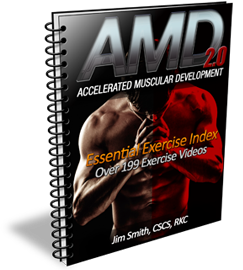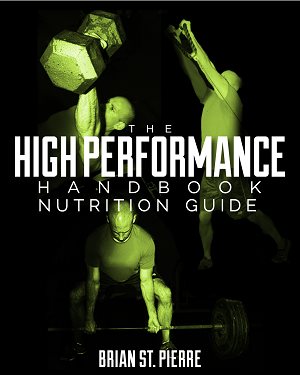Filed under: Movie Review
Yup it’s true, I could hold out no longer. I resisted for as long as I could, but I finally signed up for a Twitter account. After being encouraged by a lot of people, I mean a lot of people, I resigned myself to the fact that it was probably a good idea.
I chose the user name of BSPNutrition, and you can follow me right HERE.
While I won’t be updating it 27 times per day, you can expect new blog updates, books I’m reading, quick movie reviews and some random thoughts on various topics. Pretty much it is going to be almost as awesome as this website. Almost.
Speaking of movie reviews, my wife bought me Inception and The Town on Blu Ray for Christmas. Yeah, she is awesome like that. While I saw Inception in theaters and it absolutely blew my mind, I had not yet seen The Town. Sacrilege I know.

I gotta say, Ben Affleck has to direct more movies. And if his acting here is a sign of things to come, he could even act some more without me wanting gauge my eyes out. I will admit that his acting since about 2006 has been much improved, but this took it to a whole new level for me.
While Ben was very good, I thought Jeremy Renner was absolutely top-notch. I felt he was better in this than he was in The Hurt Locker, and that is definitely saying something. I think he might be one of those late-bloomers who comes into his own later in his career.
Overall I highly recommend The Town, it was incredibly well-written, well-acted and well-directed. Anyone who appreciates taut, well-made movies should make it a priority. And Ben Affleck needs to direct more movies. I know this might be a little premature, but is he the next Clint Eastwood?
This weekend my wife and I plan on seeing Black Swan and The Fighter. I have heard excellent things about both, and am pretty pumped about it.
Filed under: General Health, Nutrition, Training, Weight Loss
Now that 2010 is almost completely in our rearview, I figured this was a great time to recap what I thought were some of the best resources of 2010. People often get frustrated at their lack of results, yet are unwilling to change their approach and try something new.
They often don’t know where to look for change, or which products and resources can actually help them reach their goals. Well I make it a priority to only recommend products and resources that I think can help you reach your goals, whether they be to improve your coaching ability, athletic performance, body composition or overall health.
I also try to make it clear to whom these resources are intended for, so you only purchase ones that are a good fit for you and your needs. This whole process allows me to continue to learn and improve, pass some of that knowledge on to you, and also filter the marketing so you can make informed decisions on which products and resources you actually want to spend your hard-earned money on!
Here are my Top 5 Products/Resources of 2010 that I reviewed. I will note that their are many more great ones out there that I have not yet had the time to review, though I will hopefully get a chance in the near future.
1. Show and Go: High Performance Training to Look, Feel and Move Better. This is my favorite of the year for many reasons. It is an amazing training program that also provides info on proper soft-tissue work, warm-ups and gives you access to over 175 videos demonstrating every exercise in the entire program. Not only that, you also have the ability to purchase my Show and Go Nutrition Guide, which I must say is pretty awesome in and of itself! Eric provided a complete resource to help you maximize your potential. Here is my Review of Show and Go.

2. Body By Boyle Online. This is an unbelievable resource for just about anybody out there. This resource provides over a year of ready-made programs, with new programs being added every month, covering athletic performance, rehab, fat loss ad more! It also contains over 280 videos of every single exercise done at Mike Boyle Strength and Conditioning and more educational information than you could possibly imagine. Incredible stuff. Here is my Review for Body By Boyle Online.

3. Accelerated Muscular Development 2.0. Smitty outdid himself with this kick-ass program. He has totally revamped and improved his original Accelerated Muscular Development, adding in a ton more stuff on dynamic warm-ups, exercise progressions as well now providing over 199 exercise videos. Here is my Review of Accelerated Muscular Development 2.0.

4. The Single Leg Solution. Mike Robertson created an awesome product here. Let’s be honest, how many people actually train their legs, let alone one at a time? Well here Mike shows you proper single leg exercises, their execution, and their placement within a training program. It is well-researched and well-written, which is the norm for Mike. Here is my Review of The Single Leg Solution.

5. Optimal Shoulder Performance: From Rehabilitation to High Performance. Mike Reinold of the Boston Red Sox, and Eric Cressey of Cressey Performance joined forces to create one of the most educational resources of the year. This DVD set covers a seminar given at CP where Mike and Eric go over the anatomy of the shoulder, how and why things can go wrong, how to correct it and even more importantly, how to prevent it. There is also a bunch of exercise demonstrations at the end of the seminar to provide proper exercise technique, and yours truly was the demonstrator. If you have a shoulder issue, or work with a population prone to shoulder issues, check this one out. Here is my Review of Optimal Shoulder Performance.

Well there you have it, my Top 5 Resources of 2010. Maybe give yourself a nice little post-Christmas (or whichever holiday you celebrate) reward for being so awesome in 2010.
Filed under: General Health, Nutrition
It can be hard to know which supplements are worth it, and which ones are not. There is often a lack of data(which doesn’t necessarily mean there is a lack of benefit, it may just not have been studied yet), conflicting data, or too little data to draw strong conclusions.
Fortunately informationisbeautiful.net has come up with an elegant solution to finding whether a supplement is worth it or not. They have compiled data on supplements for their benefits on a multitude of problems, and have provided how strong or weak the evidence is for their use, as well as their popularity.
Check it out – Snake Oil? Scientific evidence for popular health supplements.
I will note that you might see a supplement in their more than once, but if you bring your cursor over the bubble you will see that it is because a supplement might have a benefit from more than one action.
While I think this website is fantastic, I will still note that some supplements may be worth trying even if they don’t meet the criteria set forth here. Sometimes, depending on the cost and the supplement and condition in question, it might be worth it to you to try it out and see what happens.
I want to thank Nate Tiplady for pointing that out to me. I also wanted to let any Cressey Performance readers that I will be making an appearance there one day next week. Once I solidify the day, I will let you all know.
Filed under: General Health
My main focus on improving my health and the health of others is through proper nutrition. However, I am also an advocate for regular exercise, decreasing stress and getting plenty of sleep. On top of that I am always interested in decreasing my exposure and that of my family to potentially dangerous chemicals and additives.
While there is a lot of information on the internet, some backed by science some completely made up, it is hard to know the truth and how to apply it. I personally use a stainless steel watter bottle, we only have glass pyrex tupperware (no plastic), minimize artificial sweeteners (though some sucralose makes it way in occasionally) and buy organic for the produce found to have the highest pesticide residues, while still washing them and the non-organic.
We also filter our drinking, cooking and showering water, while using hand-made soaps. These are all things that I have blogged about before, and I am sure there is more that we do that I can’t think of off-hand. While putting it altogether makes us sound like hippy granolas, the fact of the matter is there is a growing amount of evidence on many dangerous compounds in our environment and their link to neurological disorders and who knows what else.
I actually came across an article today called Risky Business: EPA Builds List of Potentially Dangerous Chemicals. It highlighted how the EPA is aware of many of the dangers that common chemicals in our environment pose to our health, and they are finally working to let the public know what the real links are. Here is an abridged version of the list, it is an early, incomplete version but still gives you a good idea of chemicals to be aware of.
There are many researchers and groups who have been sounding the alarm on the risks many of these chemicals have posed to our health. Unfortunately they have either been drowned out, mostly ignored or shushed by the EPA and lobbyists for the manufaturers of these compounds or products that contain them. For a governmental agency such as the EPA to actually be stating that many of these common chemicals are dangerous is a monumental step.
Data is no longer being ignored, sounding the alarm no longer makes you a conspiracy theorist, and the government is finally seeing the impact many of these unstudied chemicals are having on our health. It seems that the tremendous rise in learning disabilities, autism and Parkinson’s are among the key factors that finally spurred this to come about, as the data could no longer be ignored.
Why were things ignored for so long you ask? Because of an outdated law called the Toxic Substances Control Act. Under this act the EPA allows companies to put chemicals on the market without being tested for safety. Only if research data finds these chemicals to be problematic does the EPA do anything about it. The EPA can’t even study a chemical until independently done research actually shows it might be hazardous. What kind of environmental protection is this?
Recently lawmakers and the EPA tried to change the law, but chemical industry lobbyists were able to defeat the measure. Awesome.

However, the Environmental Working Group just published a first-ever nationwide study on drinking water that may spur Congress to act. This study found that 31 out of 35 cities studied had their drinking water contaminated with hexavalent chromium (or chromium-6). This is the cancer-causing compound that made Erin Brockovich famous, as it was thought to be the cause of all of the health problems in Hinkley, California.
This study actually led to 10 Senators meeting with the head of the EPA, because it was even found that the water in Washington, DC was contaminated. Currently the EPA does not require water providers to test for hexavalent chromium, and even if they do the EPA does not provide a limit on how much the water can contain.
I definitely recommend filtering your water in your home, as it can remove many of these dangerous compounds.
Here are a few of the compounds on that early-release list from the EPA:
- Aspartame
- Benzene
- BPA
- BHA
- Chlorine dioxide
- DEET
- as well as a laundry list of fungicides, herbicides, insecticides and pesticides
Not only am I going to continue with the changes we have already made, with a pregnant wife I am definitely going to make a few more. Definitely keep an eye out for the final list from the EPA that should be out soon. In the meantime do your best to minimize many of the chemical additives in your daily life.
Filed under: General Health, Nutrition
I am a person who is quite content getting most of his fluid intake from water. I do drink green tea, coffee and pomegranate juice on a regular basis with some occasional wine and beer, but the vast majority of what I drink is water. I think it would be absolutely ideal if this were the case for most everybody, but unfortunately it is not, and many people just need to have more “flavor” in their lives.
In light of that I am always on the lookout for tasty but healthful drinks that people can consume. I have blogged about many of these options and their health benefits- coffee (here, here), white/green/oolong/black tea (here, here), rooibos tea (here, here), pomegranate juice (here), Steaz zero calorie sparkling green tea (here), and wine (here).
I have also written about why fruit juice sucks, and how consuming only 8oz of it per day was associated with an increased risk for diabetes. However, I will note that in an otherwise healthy and active person some moderate juice consumption will probably be just fine.

On the same topic I have discussed the ridiculousness of multi-level marketing drinks such as MonaVie and the like. While acai is a fine fruit, it is not what it has been made out to be. Utilizing several different methods of calculating antioxidant capacity and potency (ORAC, TEAC, DPPH, FRAP), as well as inhibition of LDL oxidation and total polyphenol content it came in 6th out of 10 drinks tested. Number 1? Pomegranate juice. Number 2? Red wine. As an interesting aside that I don’t think I have ever mentioned on this blog, the most effective way to increase HDL-C is from moderate alcohol consumption (1-2 drinks per day).
Now having begun this blog with the longest preface in history, I wanted to touch on a some new data that I thought was rather interesting. While I have written quite a bit about the myriad health benefits of tea consumption, I came across some rather interesting data I had not heard before.
While I know that green tea (and the other members of the tea family) are beneficial to oral health, it was recently found that people who drink at least 1 cup of green tea per day had a decreased risk of tooth loss compared to people who did not drink any. It seems that the catechins in the green tea kill the mouth bacteria that are associated with gum disease and tooth decay.
What I also want to point out with this is that white tea actually contains the highest amount of catechins, while black tea contains the lowest. Now this doesn’t mean that black tea is not good for you, it most definitely is, but it probably won’t help much in the teeth department. Its fermentation process actually converts the catechins into other healthful compounds called theaflavins or thearubigins that decrease your risk of stroke. Enjoy a wide variety of teas for the greatest overall benefit to health.

On top of that, even though I wrote the above piece on why fruit juice sucks, if you insist on consuming a glass of OJ every morning (and who could blame you, it is delicious, but beware companies with poor production methods), here is some new data on the best options. While it seems intuitive that orange juice with pulp would be more nutritious since it does actually contain pieces of whole fruit, some researchers actually put this question to the test.
They found that if your OJ has pulp, it contains 30% more anti-inflammatory flavonoids and cancer-fighting limonoids than OJ without it. While this certainly isn’t earth-shattering stuff, it is nice to know that if you enjoy a small glass of OJ (maybe mixed with a small amount of pomegranate? – its delicious) at breakfast, getting it from a company that only uses oranges from the US and makes it fresh with pulp, you are maximizing its benefits and minimizing its negatives.
All in all, while I still recommend you consume plenty of plain water, there are clearly many ways to get in some flavorful drinks that provide tons of health benefits, minimal calories, and lots of flavor, so drink up!
Filed under: General Health, Nutrition, Training
My good friend Cassandra Forsythe has started a Fit Pregnancy Interview Series over on her blog. This is especially pertinent to me with my wife being 20 weeks pregnant herself.

Cass has interviewed nine women and counting who stayed extremely active during their pregnancies. She wanted to shed some light on this topic because so many women are hesitant to exercise hard while pregnant, and so many people will criticize the ones who do.
Cass said she gets about an email every week asking her about this very topic, and she wanted to provide not only quality information on the topic, but real-life examples of women who have been active while pregnant and the impact it had on their pregnancy, labor and child.
I highly suggest you check these stories out, whether you are pregnant or not. These interviews are rather enlightening, though my opinion may be a little biased!
Filed under: General Health
I recently wrote a blog refuting the recent IOM report on vitamin D, because I believe, along with the leading vitamin D researchers, that the report was off-base and gave poor recommendations.
This belief caused a reader to issue a response to my blog in the comment section. I thought his comment, and my response, needed to be seen by those of you who don’t read the comments section of past blog posts! It is long and in-depth, but enjoy!

Hi Brian,
Let me first say I agree D3 is a worthwhile supplement to take on a daily basis, and I have no vested (i.e., career) interest in whether the recommended intake of D3 increases or decreases. I am simply a methodologist/statistician who thoroughly understands the methodological shortcomings of this literature. I have served as lead statistician on numerous studies out of endocrinology (among many other areas and disciplines) and simply let the numbers do the talking! What is provided below is my honest, unbiased methodologist’s view of the D3 literature.
With that said, I purchased your supplemental Nutrition Guide with Eric’s Show & Go that was filled with great information, but I cringed when you stated you can safely have serum 25(OH)D of 50-80ng/mL. You not only have an incredibly high range, but your language indicates individuals should be on the high end of this range. You even go so far as to insinuate a reader with serum 25(OH)D of 20ng/mL could never get into your recommended range without ingesting an unsafe dosage of D3.
Nevertheless, I digress. I believe you should reconsider your quick critique of the review article describing the Institute of Medicine’s (IOM) daily D3 recommendations, and, further, reconsider your own recommendations to your clients and readers! The IOM recommended an optimal serum 25(OH)D of 20ng/mL. This recommendation was not only to maximize protection to the public, but was based heavily on the consistently emerging body of literature suggesting the benefits of increasing D3 intake plateau with serum 25(OH)D around 20ng/mL. Thus, there is absolutely no reason to increase dosage to increase serum 25(OH)D if no additional benefit is observed. The IOM go on stating individuals can safely ingest to 4000IUs of D3 daily; however, this is the threshold where adverse events have been shown in the literature. That is, ingesting more than 4000IUs is associated increased probability of adverse events. In addition, you are clearly aware that studies have shown serum levels above 50ng/mL increase the probability of adverse outcomes (e.g., kidney stones), especially with younger adults, but whether you choose to recognize these studies is debatable.
There is no doubt in my mind that you already knew some (or all) of this information. Coming from someone who just plain understands research, I urge you to critique studies suggesting health benefits of D3 with the same rigor you applied to studies suggesting adverse events. Any D3 study suggesting an increased health benefit must be viewed with caution—aside from probably the benefits to bone health, which has been shown to be a most consistent finding. No long-term safety studies for D3 have been published. This is a HUGE consideration. Further, you were quick to state that research suggesting adverse events with D3 supplementation are flawed methodologically, but you fail to state that ALL research is flawed. This includes studies suggesting health benefits of D3, which are essentially association studies that are inherently unable to imply causality. Further, if believe you are adequately critiquing the literature, you obviously know statistical significance (i.e., p < .05) means nothing. Thus, you already know that any D3 study with a large enough sample is guaranteed to indicate statistical significance. If you didn’t know this, however, then I recommend finding an individual with a background who can explain the literature to you, in an unbiased manner. It will make you a more informed nutritionist who is able to project ACCURATE information to your clients and readers!
Best,
Walt

Hi Walt,
While I appreciate the well thought-out comment, I do not appreciate the condescending tone. Yes I do understand the limitations of statistical significance, and I do know that most of the vitamin D data is based on observational studies, but there are actually many controlled trials on vitamin D supplementation above 600IU showing many benefits. As for pointing out the flaws, I simply stated that other vitamin D researchers have pointed out the flaws in the methodology, not me. I am not a vitamin D researcher.
However, here are a few items for you to consider. The IOM wants people between 20-29.9ng/mL because in their estimation that provided the best protection for bone health. However, There is a lot more to vitamin D than bone health.
Beyond that, there are many researchers on vitamin D who roundly disagree with the recommendation. One would be Robert Heaney of Creighton University, one of the leading bone researchers in the world. He recently wrote a letter to the Annals of Internal Medicine about some literature reviews that they had published on vitamin D. In it he stated that doses ranging from 4000-5000IU/day (to reach 30-40ng/mL)are not high, and are actually within our normal physiological range since these values are consistent with those found in healthy individuals living in conditions similar to our ancestors. He also pointed out that outdoor summer workers often have blood levels of 48 to 80ng/mL, without reported adverse affects. In fact, the National Institutes of Health states that the normal range for vitamin D status is 30-74ng/mL.
And since we are on the topic, lets take a look at a recent controlled trial on vitamin D supplementation. A recent 16 week study compared supplementation of 400IU/day to 2000IU/day. 2000IU/day beat 400IU/day in every measure. The vitamin D status in the 400IU group went from 13.6 to 23.9ng/mL (in your optimal range), while the 2000IU group went from 13.3 to 34.3ng/mL (in my optimal range). Aortic stiffness decreased and body fat mass was inversely associated in the 2000IU group, while the 400IU group actually had an increase in aortic stiffness and no association with body fat mass.
Granted that is one study (and there are many more), but it did find that more than 29.9ng/mL did provide greater benefit than being below it. Seems to be an additional benefit to me.
We also know that pregnant and lactating women need more vitamin D. It has been shown that breast-feeding women need at least 2,000 to 4,000IU/day to normalize their vitamin D status, and to normalize the vitamin D status of their feeding baby. Less than that is ineffective.
Now would I have worded the Show and Go recommendations differently if I were to write it now, probably yes, but I don’t think it was the evil you have made it out to be. To get from 20ng/mL to my stated range of 50-80ng/mL would take approximately 3000IU/day, which is below the IOM upper limit of 4000IU/day, how is this dangerous? You also state that research has clearly shown that intakes above 4000IU/day is associated with increased probability of adverse events. Where is this research? The IOM also stated that 10,000IU/day might lead to toxicity, yet they did not produce any reproducible evidence that that level has ever caused toxicity in humans.
The data on vitamin D is certainly not conclusive, but since we know that at least 30-40ng/mL (and higher) is normal in people living in conditions similar to our ancestors (ie – getting plenty of sunlight and eating real food), I don’t see how that range is dangerous. Might different populations have different ranges? Yes, possibly. Might being near 80ng/mL not be the best idea? Yes, possibly (though many researchers and the vitamin D council would disagree). Is 20ng/mL optimal? No, and the research does not agree with that (I just showed one example of many). What is optimal? It depends on many factors, but I think being anywhere from 30-50ng/mL is probably a pretty safe bet, though individual differences are definitely possible, and there are populations who might not want to elevate their vitamin D status.
To cap this off, the Institute of Medicine consulted with 14 vitamin D experts about their recommendations. These 14 experts all provided reports on the recommendation, and yet these 14 reports have been suppressed. They won’t let us know what these vitamin D experts (including Robert Heaney) had to say about their report, interesting… Also of note the Canadian Cancer Society, the Canadian Pediatrics Society, and Osteoporosis Canada all decided to maintain their current recommendations of 800 to 2000IU/day of vitamin D, despite the IOM report.
Like I said in the blog, get yourself tested. You should know your levels before you start supplementing, to know where you are compared to where you want to be. Discuss your results with your doctor, and most importantly, educate yourself.
Sincerely,
Brian
For more information on the topic, and for more reading from experts who roundly disagree with the report, see below. FNB stands for Food and Nutrition Board, which was technically the arm of the Institute of Medicine who released the report.
Comment on the IOM Vitamin D and Calcium Recommendations
Vitamin D Council Statement on FNB Vitamin Report
Statement on FNB Vitamin D Report
Statement on FNB Vitamin D Report: Bill Sardi
Why the New Vitamin D Recommendations Spell Disaster For Your Health
Filed under: General Health, Nutrition, Training
First off I just wanted to thank everyone for the well wishes and congratulations, they are much appreciated!
Today I wanted to direct your attention to some really quality content that I have come across lately that I think you might want check out for yourself.
Don’t Have Time to Train? – Tony Gentilcore. Tony pretty much lays down the law as to why there is always time to train. Not “having time” really means you are not making time. I even fell victim to this for a while, often only training 2x/week, but no more. I am back on 4x/week and kicking ass. Hell my best friend was able to train consistently (and very creatively) while being on the top of a mountain on the border of Afghanistan and Pakistan. If he can do it, why can’t you?
Low FODMAP diet has been great for my gut – Cassandra Forsythe. Cass discusses a very interesting concept on food and its effect on your GI tract. She is someone who has had GI problems for years, as she discusses, and this new strategy has done wonders for her. If you are someone who has struggled yourself, check it out.
Dr. Mellanby’s Tooth Decay Reversal Diet – Stephan Guyenet. I think when I post one of these blogs I always include a post from Stephan, his stuff is just that good. Considering that my wife is a dentist, this post was even more poignant to me. While the post does disparage grains a bit due to their phytic acid content, I will point out that sprouted grains have minimal phytic acid due to the sprouting process.
Filed under: General Health
Yes, you read that right, my wife and I (well just my wife really) are having a baby girl!

This is a profile picture of our girl, she is laying on her back, and you can see her spine and head, along with her mouth and nose
Anna is about 19 weeks and we just found out yesterday that it is a girl. It was a very exciting day to say the least. Apparently she was secretly hoping for a girl, I had no idea! I was just happy that she appears healthy, and she was, weighing in at 9oz.
I also have to say that the ultrasounds they do today are insane. We were able to see the baby move and articulate her limbs and fingers, it was incredible. They measured the length of her femur, humerus, head circumference and more. They pointed out her kidneys and stomach. They checked her upper lip, and they showed us the blood flow from the placenta to her. I am sure there was quite a bit more, it was absolutely mind-blowing.
As for names, right now we are leaning towards Kate, but we are open to other ideas. Feel free to chime in, just don’t be offended if we don’t choose it!
Filed under: General Health, Nutrition, Training
I wanted to give you all a friendly reminder that today is the last day you can get Accelerated Muscular Development 2.0 for 20% off the retail price! The sale ends at midnight tonight.
If you are interested in a fantastic program sure to help you build slabs of muscle and shed pounds of fat, just follow the link below for more info:
===> Accelerated Muscular Development 2.0 <===
Today is going to be done a little differently. I actually have a multi-part series that I was thinking of starting today, but then I thought it would probably just be best to start that fresh come Monday.
Instead of that series, I am going to recap any fascinating information presented by some of my classmates just like I did last week with Coffee May Decrease Risk of Alzheimer’s. So I will actually return later this afternoon to fill you all in on whatever cool information I come across!
I also want to let you all know that I am going to be writing some articles for several publications this month, so be on the lookout for those in the near future!
Lastly for all of you Red Sox fans out there, could these past 7 days been any more awesome in an off-season? Carl Crawford and Adrian Gonzalez?!? The Yankees are crying themselves to sleep right now. It might only be December, but It. Is. Awesome!
So I have returned to fill in this blog today, and let you know about some cool stuff I learned about from my classmates today.
The first presenter discussed how green tea and black tea consumption can decrease your risk for the metabolic syndrome. More research is needed on the topic, but green tea is able to modulate to a degree some of the factors of metabolic disease.
The second presenter discussed the role of restaurants implementing menu nutritionally labeling, and its impact on customer choices and restaurant financials. It seems that providing the nutrition facts for meals does improve people’s food choices to a degree, however the meal must still be appealing. It is also clear that the profitability of restaurants who have implemented these protocols already have not been negatively affected.

The third presenter discussed buckwheat. She discussed how it is really a seed like quinoa and amaranth, not a true cereal grass like wheat, rye and barley. She discussed its high antioxidant content, and how the sprouting of it (and other seeds and grasses) increased the antioxidant content. It was certainly interesting to find out another benefiting of sprouting grains.
The final presenter discussed some new methods in meat preservation. A huge amount of beef is lost every year to spoilage, costing the beef and supermarkets a lot of money. In her presentation she showed how customer-perceived spoilage (mainly from color change, even though the meat may be fine) or actual spoilage occured from the fats in the beef oxidizing. She presented data showing that feeding cows vitamin E a few months prior to slaughter, and packaging the beef with a small amount of rosemary extract almost completely prevented lipid oxidation (for at least 12 days). This could save a lot of cows!

On a side note, it has also been shown the seasoning your beef with rosemary can prevent many of the harmful heterocyclic amines caused by cooking meat at high temperatures, so this could help improve beef in more than one facet.
On another good note, today was the last day I had to commute to Orono for exactly a month. I sure won’t miss that 165 mile round trip commute! For a little while at least.



















Posted on December 30th, 2010 by Brian St. Pierre
3 Comments »